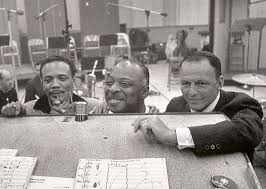A better reading of the world as it is usually means that we can’t scale up the idea of intention to large and diverse groups. The culprit is the pronoun “they,” which over-simplifies our world and catches us in traps of our own making.
We are usually right to assign responsibility for an action to a fully functioning adult. We assume that individuals can make decisions from an array of available choices. We see individuals as willful. Notwithstanding some neuroscientists who want to deny free will by reducing all human conduct to chemistry, most of us make the reasonable assumption that people really do have intentions. They act on their beliefs, habits and preferences. Notwithstanding important influences, they are still capable of weighing and acting on potential choices.
As ordinary as this pattern of thinking is, it can easily be overextended. Its actually common to see news reporters and many of the rest of us assigning intentionality to individuals or groups for whom the term is, at best, a stretch.
A simple example: a friend who is a geriatric psychotherapist frequently complains that staffs in nursing facilities usually assume that a patient is “acting out” if they are unkind or manipulative. In our language these kinds of descriptions usually imply volition: the patient intended to behave in a certain way. The problem, of course, is that most of these folks have dementia, which robs them of the essential gift of agency. Their behavior is not necessarily what they would have done if the neural pathways once available to them were still intact. The end result is sometimes to punish the patient rather than acknowledge that their behavior has causes not easily overridden.
A guest column in the New York Times by think-tank conservative Max Boot also caught my eye because of this problem. He criticized the Republican Party for carefully nurturing negative attitudes about scientific research and serious intellectual inquiry. In effect, he made the Party an agent engaged in a concerted effort to dumb-down complex problems such as climate change, immigration reform and a sometimes sluggish American economy.
The military or a tightly run corporation may be said to have “intentions” or “missions.” Parties: not so much.
Boot is right that many in the GOP are suspicious of reasoned arguments based on solid science. My doubts extend only to attributing a clear purpose to the party itself. The problem with his assertion is that political parties in the United States are never well organized, barely coordinated on anything, and have “members” with only paper-thin levels of loyalty. The military or a tightly run corporation may be said to have “intentions” or “missions.” Parties: not so much.
The same mistake is often made with regard to the President, who is supposedly able to control of a dizzying array of national challenges. But the real story is that we also assign too much agency to the Presidency. For example, most economists believe the chief executive cannot significantly change the course of the economy. We may want to think of the American business cycle as under the thumb of the White House. A more accurate view is that it’s an engine without a single engineer. Indeed, most presidents would welcome the chance to be as powerful as is widely believed. The norm for these leaders is to leave office frustrated at how little influence they were able to exert over the many far-flung agencies of the federal bureaucracy. F.D.R., for example, complained that he couldn’t get fundamental changes in the Navy, even though he was Commander in Chief of the armed forces and his political career included a stint as the Navy’s Assistant Secretary.
The prime rhetorical culprit here is the pronoun “they.” The English language invites us to singularize responsibility under the umbrella of this term. But a better reading of the world as it is usually means that we can’t scale up the ideas of purpose and intention to large and diverse groups. The pronoun over-simplifies our world, catching us in traps of our own making.
![]()


